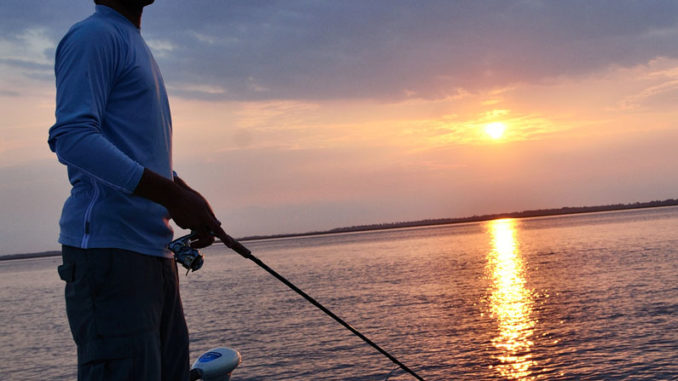
With the spawn approaching, Bulls Bay trout are big and hungry this month.
Few people need a calendar to know when spring arrives; the warm weather, new foliage and blooms erupt across the landscape. And for light-tackle saltwater anglers, the spring green is just the marker needed to slide back into the salty waters of Bulls Bay to latch into a snaggle-toothed yellowmouth.
Spring is typically overlooked for speckled trout because fall is generally when most anglers engage in targeting speckled trout with a tackle box full of soft plastics and a bucket full of live shrimp. Nevertheless, April conditions are often very favorable for catching specks in many of the same areas. And, repeatedly, some of the biggest trout of the year will end up on the other end of the line.
Even though specks are best caught during periods of cooler water, wintertime water temperatures send most inshore specks into the ocean, leaving a few isolated groups of fish in deep holes of estuaries. Trout are intolerant of temperature extremes on both ends of the spectrum, leaving the two transitions seasons, as the ideal times to catch them.
As the water temperature rises into the upper 50s, trout move from their deep-water refuges and from the ocean into familiar shallow grounds to find something to eat.
Capt. Rob Beglin of Inshore Xtreme Fishing Charters anticipates the spring fling when specks reappear in their normal places, ready to feed.
“The spring is great with the water warming up and the bait rolling back into the bay,” said Beglin (843-375-6366). “The trout that overwintered in the ocean will follow the bait back into the creeks.”
According to Beglin, he can tell when he catches a creek trout versus an ocean trout by for their coloration.
“Ocean fish are bright silver-colored, and the creek fish are very dark still,” he said, explaining that it will take a few days for ocean specks to darken up in the bay waters.
Capt. Jordan Pate of Carolina Guide Service keeps tabs on the trout throughout the year, and spring is no different. He makes a point to spend time in Bulls Bay for an opportunity to land his biggest yellowmouths of the year.
“The big females are just coming out of their winter thaw and are starting to feed on glass minnows and small mullet,” said Pate (843-814-7900). “The big females are beginning their annual spawn and will be ready to feed.”
With spawning on the horizon, trout will be on the move, looking for something to eat. And as the water temperature slowly rises, trout will be found in various stages from deep water to the shallow banks along the bay.
“The fish will be wadded up this time of year on the ledges and in the mouths of the main creeks,” he said. “Always pick the banks and creek mouths with oyster bars.”
Trout are very structure-oriented and will set up next to large oyster rakes, docks or any other type of submerged structure. Beyond structure, trout fishing is always better when the water is on the clear side of the spectrum. According to Beglin, the predominant spring wind originates from the southwest.
“Look for leeward bank lines with clear water, protected from the wind,” Beglin said. “Look for creeks on the southwest side, where the cleaner water will be. Awendaw Creek, Graham Creek and Anderson Creek going into the south end of Bulls Bay will be real clean in April.”
Pate hits many of the same clear-water places; he will choose areas around creek mouths where the current diverts the flow around some type of submerged structure.
“I like any kind of bank with an eddy outside of the direct current, but with enough flow to keep the fish locked into an ambush position,” he said. “The creek mouths that have a buildup of oysters around the entrances will create just that scenario.”
But Pate will go out of his way to hit the white-colored banks along the open bay.
“The banks in the bay lined with white oyster shell on high tide, with wave action and near a good drop-off, are always great spring trout spots,” he said. “Anderson Creek on the south side of Bulls Bay is ideal on a high, falling tide.”
From shallow water barely waist deep to holes with more than 20 feet of water, speckled trout will find several homes in the spring, and Beglin will often find them cruising along skinny-water flats in the same places as redfish.
“The trout will be up on the shallow flats getting warm when the water is low during the middle of the day and on the deep edges of flats that dry up on low tide,” he said.
Fortunately for anglers, finding the right lure will be the easiest task. Coming out of their winter famine, trout are fired up and ready to devour as much food as possible. Since the majority of the available forage is either glass minnows or small finger mullet, baitfish imitations will produce the best outcome. The typical collection of paddletail grubs, including the 4-inch Saltwater Assassin Sea Shad in Cajun croaker — Beglin’s favorite color because it looks just like a minnow in the water — opening night, sweet pea and electric chicken colors, fished on a light jighead or flutter hook, may be the ticket.
Even hard, shiny baits will trigger a quick strike, and the gold-standard collection of MirrOlures from the deep-sinking 52M, TT, and 18MR Heavy Dine to the suspending 17MR MirrOdine, Catch 2000 and the 14MR MirrOdine Mini are tough to beat in a wide variety of colors. Lures should be fished with a slow or stop-and-go retrieve for the best results.
As the month progresses and the water continue to warm, estuaries will begin to see small shrimp in the backwaters that will allow anglers to fish small shrimp imitations with good success. But even if the real shrimp haven’t arrived, most trout will latch onto a tasty looking imitation at first sight.
Pate uses Egret Lures’ 3-inch Vudu Shrimp, either cast-and-retreive or rigged under a popping cork. The Vudu’s small stature is ideal for mimicking the young shrimp taking up residence in the bay.
Anglers coming to check out the spring season in Bulls Bay shouldn’t worry. It is known to support one of the best trout fisheries in South Carolina for good reason. The entire bay and surrounding creeks have a high salinity from the lack of freshwater intrusion and routine flushing from each tidal cycle that trout just find irresistible. Nevertheless, anglers can expect to experience a strong speckled trout bite right during the middle of the spring season.
DESTINATION INFORMATION
HOW TO GET THERE — The sprawling area of Bulls Bay extends about 40 miles, approximately from Awendaw north past McClellanville to the edge of the South Santee marshes. US 17 is the best access from almost every area. Prime spots are easily accessible from the McClellanville municipal ramp off Jeremy Creek (an annual or weekly fee is required) on the north end and the Buck Hall Recreational Area in the Francis Marion National Forest (daily use fee) on the south end.
WHEN TO GO — The spring trout bite begins when the water temperature riseS into the 50s and will continue strong until it hits the 70-degree mark, usually in May. Choose days when the wind is light and during periods with moderate tides, as big tides will muddy the water and turn off the bite. The best fishing in early spring will be up in the day, shifting to early and late as water temperatures rise toward summer levels. Trout can be caught on all stages of the tide, but choose the periods when the water is clear and moving.
TACKLE/TECHNIQUES — Soft plastics on light jigheads or flutter hooks and small, suspending hard baits are good lure options. Baitcasting and spinning gear both perform well; rods should be at least 7-feet with medium heavy actions. Long casts are required and preferred to hit ideal spots. Braided line is preferred in the 10- to 14-pound classes.
GUIDES/FISHING INFO — Capt. Rob Beglin, Inshore Xtreme Fishing Charters, 843-458-1920, www.fishingchartermyrtlebeach.com; Capt. Jordan Pate, Carolina Guide Service, 843-608-8307, www.carolinaguideservice.com; Pawley’s Island Outdoors, 843-979-4666; Sewee Outpost, US 17, Awendaw, 843-928-3493. See also Guides and Charters in Classifieds.
ACCOMMODATIONS — Village Fish Camp, McClellanville, 843-814-7900, www.VillageFishCamp.com; Georgetown Area Visitors Center, www.visitgeorgetown.com; Charleston Area Convention & Visitors Bureau, www.charlestoncvb.com; South Carolina Association of Visitors Bureaus, www.discoversouthcarolina.com.
MAPS — Navionics, 800-848-5896, www.navionics.com; Waterproof Charts (Nearshore #98) 800-423-9026, www.waterproofcharts.com; SeaLake Fishing Guides, 800-411-0185, www.sealakeusa.com; DeLorme South Carolina Atlas & Gazetteer, DeLorme, 207-846-7000, www.delorme.com.

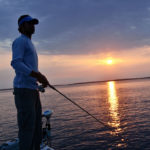
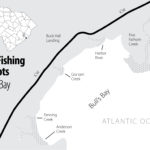
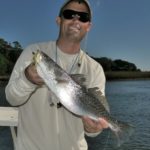
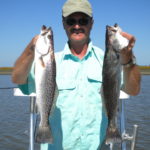



Be the first to comment